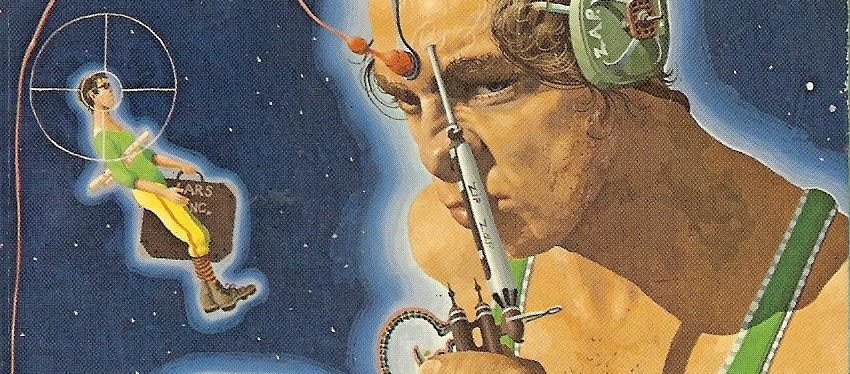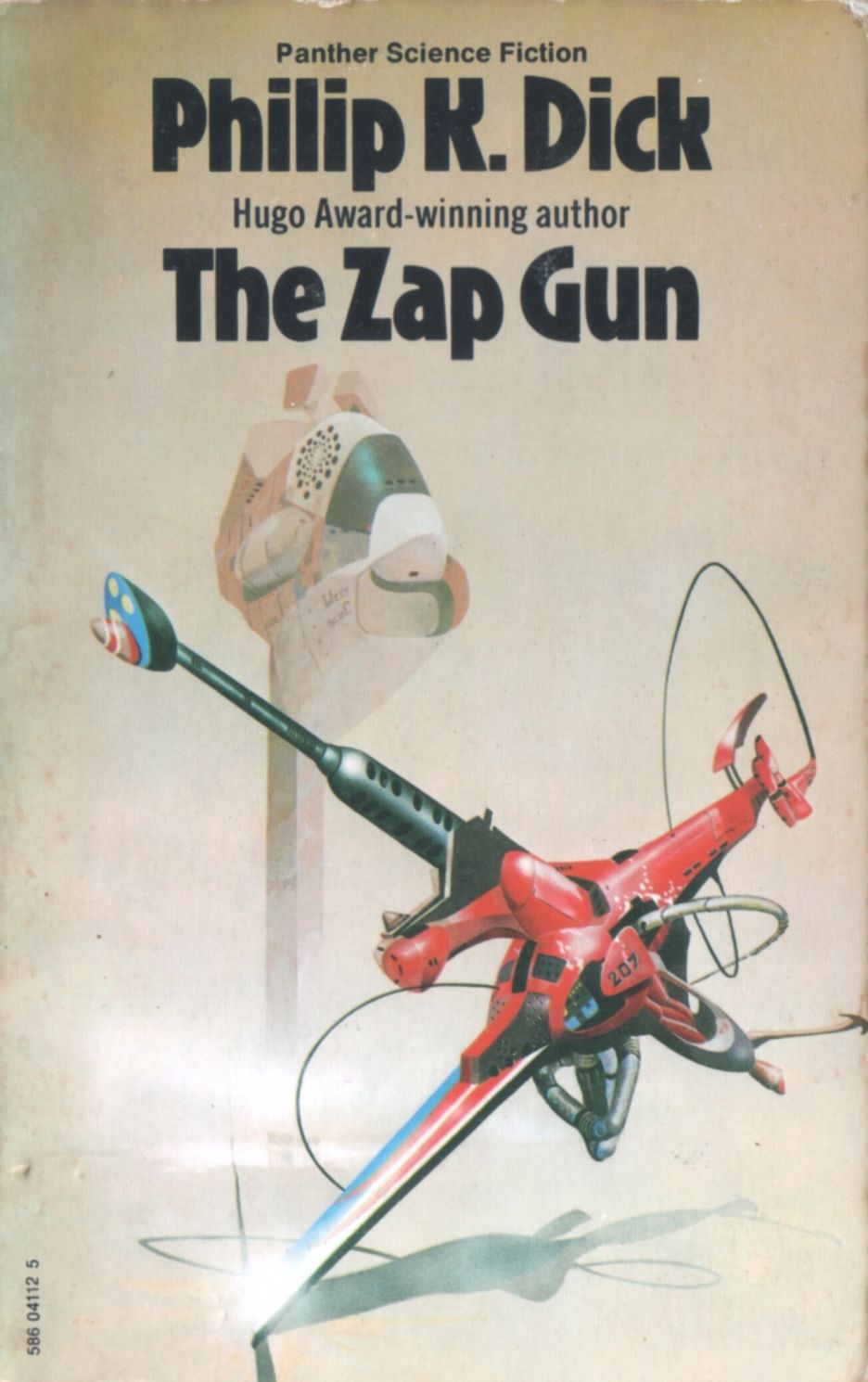

“You have become an outcast. A wanderer. Homeless.”
Philip K. Dick was just brimming with zany ideas. His biggest obstacle, and why many view him as something of a low-brow hack, is that he basically refused to spend time crafting good stories around his ideas. Sure, he had the drug-fueled energy to get several dozen of them down on paper in partially digestible form, but they’re only good if you are in the mood for something that stimulates you exclusively in the abstract because he mostly flies by the seat of his pants and rarely circles back to edit. In The Zap Gun, the central idea is a psyop—two sides locked in a cold war decide to “fake it” and let their citizens go on believing the war is occurring, while in fact the arms race is led by two mediums who design the weapons by doodling while in a trance-state. The book features many of Dick’s familiar preoccupations—drugs, reality fake-outs, drugs, aliens, drugs, sex, drugs, time travel, drugs—and jumps around between a host of cardboard characters with goofy names like Lars Powderdry, Lucky Bagman, and Oral Giocomini. Viewed through the lens of Cold War satire, it’s passable, but it’s a minor work by an author who was churning out multiple books per year in his prime (his Wikipedia page indicates that he wrote six books in 1964, the year that he wrote The Zap Gun).
In a future 2004, Lars Powderdry speaks with a telepathic brazen head named ‘Ol Orville, a byproduct of the secret truce between Wes-Bloc and Peep-East. Like everything that Lars dreams up in his trance state, ‘Ol Orville is a “ploughshared” military weapon that has been repurposed as a consumer product—originally designed as a flight guidance system, it is now a mind-reading guru found in the junk drawers of the masses. Lars is depressed because his entire career is a sham, but ‘Ol Orville posits that he is actually subconsciously afraid that he is impotent. To solve this, ‘Ol Orville suggests that Lars seduce Lilo Topchev, Lars’s Peep-East counterpart whom he knows nothing about, even though he fantasizes about her constantly despite a zesty love life with the head of his company’s Parisian branch. The stars align when alien satellites arrive from Sirius and humanity must create actual functional weaponry to ward off the unexpected attack—so the two factions decide to bring Lars and Lilo together to enter their trances in collaboration and see what happens.
It’s all very fast-paced and Dick’s writing leaves very little to latch onto in its own right, so we’re left with just the ideas he presents and the super shaky plot, which are cool and satirical, but not 200+ pages worth of cool and satirical. It turns out that all of the weaponry that Lars and Lilo have ever dreamed up has come out of a series of comic books called The Blue Cephalopod Man from Titan, written by a mad Italian. There’s a random subplot about a conspiracy theorist and a white supremacist, and a time-traveling android to cap things off. What does it all mean? Who knows. Who cares.
None of it really matters. PKD was barely even trying to plot this thing out. Though it is funny at times and has a neat premise, it’s not coherent enough to stand on its own two feet as a legitimate work of science fiction. Maybe it has merit as straight pulp. But don’t peruse it expecting to find any meat to chew on.